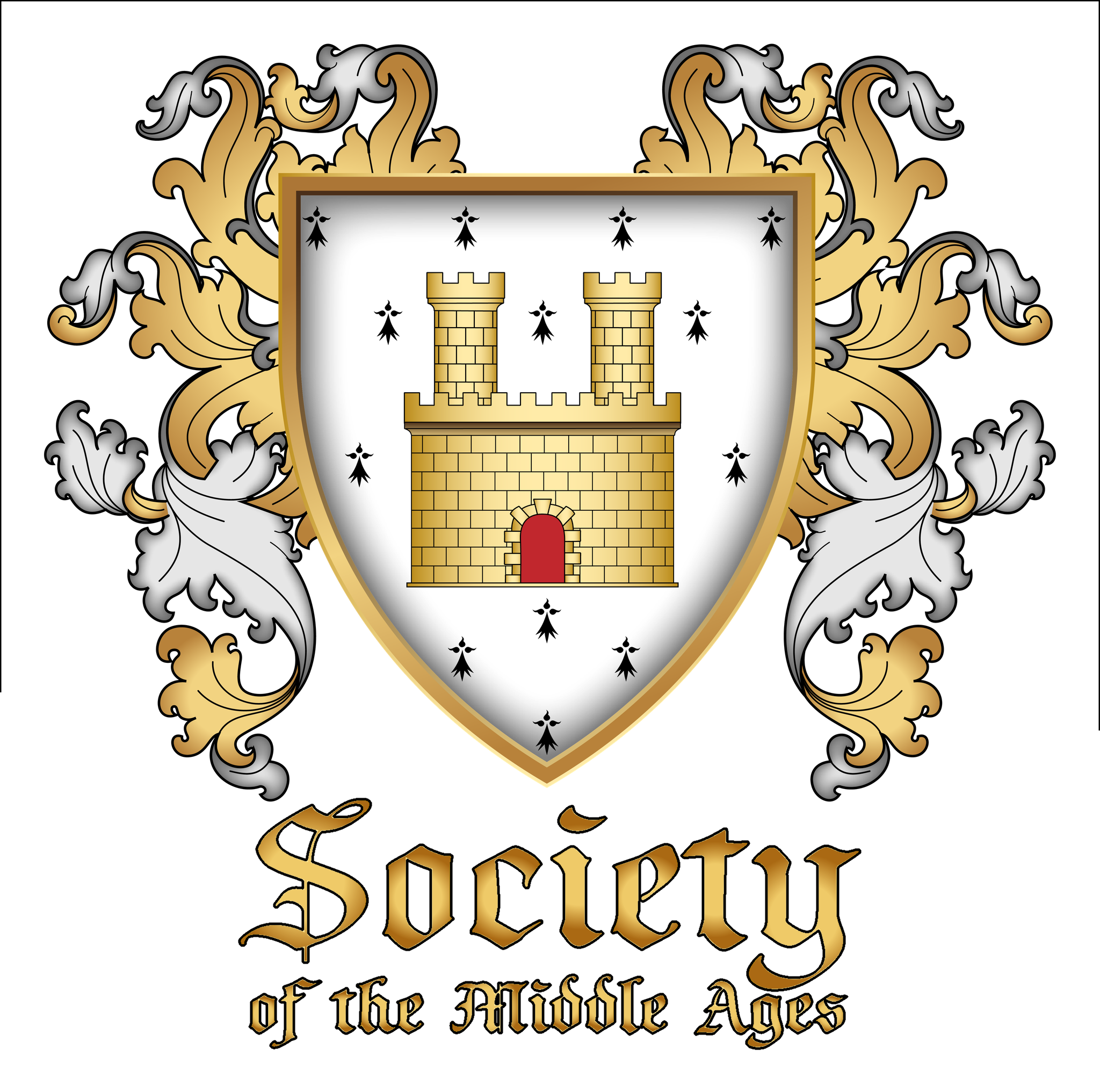Muskatour King of Arms
Letter of Registrations and Returns
LoRR 2021-09
Registrations
- Aurantia, Shire of – New Name, New Arms
Azure, an orange tree Or atop a base vert, a chief ermine.
- Bolcán, Shire of – New Name, New Arms
Or, a double-headed eagle gules, a bordure checky argent and gules, a chief ermine.
The Muskatour staff commends the shire on their homage to the great poet and author John Milton, whose arms are Or, a double-headed eagle gules and who wrote about a volcano in Paradise Lost.
- Esteban Benguera de Marion – Resubmission Arms
Per bend sinister gules and sable, a bend sinister between a decrescent argent and a sun argent eclipsed sable.
Originally submitted with a modern complex line of division on the bend, the change to a plain line has resolved the reason for return.
- Gisla Hrefnudottir – New Name, New Arms, New Badge
Arms: Argent, a chevron purpure between three ravens contourny sable.
Badge: (Fieldless) In pale, a raven contourney sable perched upon a human skull argent.
Submitted as Gisla Völva Hrefnudottir, the client provided no documentation for the epithetical byname Völva. Additionally, there was no evidence presented and the Muskatour staff could not locate any examples of Viking-era Scandinavians using two bynames (in this case, an epithet and a matronymic.) Therefore, we have entered the armoury into the record under the holding name Gisla Hrefnudottir. The client may also be interested to know that while völva was an epithet attached to those thought to be seers, it was used principally in a derogatory context. A documentable epithet with the same meaning is sjóna (Viking Bynames found in the Landnámabók by Sara L. Uckelman (https://www.ellipsis.cx/~liana/names/norse/vikbynames.html)).
The arms and the badge are both legacy registrations from another organization, and do not conflict with any current SMA registrations.
- Rekkr silverboar – New Name (see Returns for Arms)
This is an Old Norse given name with a “plain language” constructed byname. Client submitted no documentation for the epithetical byname. Muskatour staff was able to locate documentation for the epithetical byname galti (meaning boar) in Old Norse. We elected to give the client the benefit of the doubt regarding the addition of a color to the byname and will continue to do so unless and until new research indicates otherwise. The capitalization has been reduced in accordance with evidence from the Landnámabók.
Returns
- Malik Raven – New Name
Malik is documented as an Arabic given name roughly translating to “king”. Because the name was in use in Arabic countries for people other than royalty, and because the form indicating actual royal title is al-Malik, it is a permissible Arabic given name.
Raven is documented as an English surname in the grey era (early 16th century) and is therefore a permissible English byname.
Per Appendix C, Arabic and English are not compatible language groups. No documentation was provided for Malik as a given name in any region compatible with 15th/16th century England. The earliest found by Muskatour staff was in northern Germany in 1742 – well after our period. The client is advised that Malk (without the i) is found as a late-period English surname dating to 1547, making that spelling registerable as an English given name. Also, the name Malachi, deriving from the same roots as Malik, is documented as an English given name as early as the late 15th century.
- Rekkr silverboar – New Arms (see Registrations for Name)
Checky gules and sable, a boar rampant contourney argent.
The arms are returned for noncompliance with the Rules for Submission section IV.C.2.c.3 which states in part, “Elements not mentioned above must have good contrast between parts, including elements evenly divided into four parts other than quarterly or per saltire, divided into more than four parts, and unevenly divided into multiple parts.” Because a checky field is a division of more than four parts, those parts cannot be color/color or metal/metal. The client is advised that providing documentation of such a pattern in period heraldry (as described in section IV.D) may result in a successful appeal.
